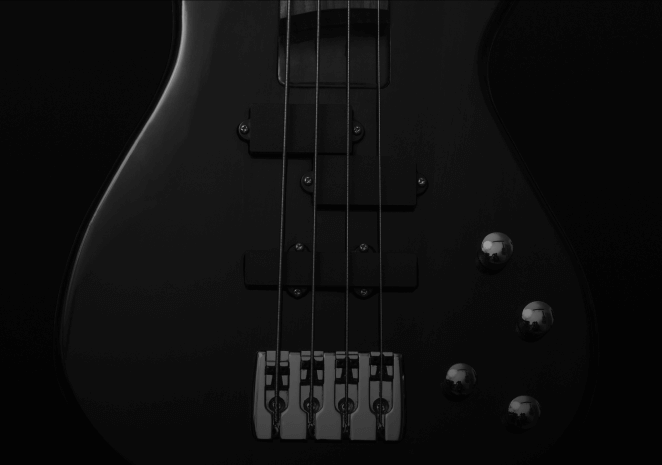About the Abysmal Dawn
After a six-year pause that left fans on edge, American death metal powerhouse Abysmal Dawn has erupted back onto the scene. Their album Phylogenesis signals a powerful comeback shaped by reflection, adversity, and bold reinvention. What drove the band to return stronger than ever? What experiences fueled their musical and personal transformation during the years between releases?


From Obsolescence to Renewal: Abysmal Dawn’s Transformative Years
Following the celebrated Obsolescence in 2014, Abysmal Dawn embarked on a journey that defined their resilience. The group did not retreat from the spotlight; instead, they undertook four major North American tours and, for the first time, stormed venues in Europe and South America. These tours expanded the band’s reach and forced them to stretch artistically.
Following the celebrated Obsolescence in 2014, Abysmal Dawn embarked on a journey that defined their resilience. The group did not retreat from the spotlight; instead, they undertook four major North American tours and, for the first time, stormed venues in Europe and South America. These tours expanded the band’s reach and forced them to stretch artistically.
At the same time, Charles Elliott, founder and creative leader, established Tastemaker Audio in Los Angeles. This recording studio became an essential hub for the band’s projects and for artists seeking expert production. Yet, with intense schedules came new hurdles. Internal conflicts, managerial pressures, and evolving musical ambitions challenged the core unity of Abysmal Dawn.
The group’s willpower faced severe tests, including diverging priorities among members and fading enthusiasm. In interviews, Elliott recalls how these tensions brought the band to a crossroads, raising the possibility of disbandment. However, changes in the lineup rekindled creative energy, pushing them toward a new era.
Gallery






“Great music comes from the heart, but popular music comes from the soul”
Reclaiming Purpose: Turning Crisis into Creative Momentum
The aftermath of prolonged touring and friction left the band teetering on the edge of collapse. Elliott has described this period as one marked by exhaustion and disillusionment, especially after rigorous European dates. Yet, decisive actions brought clarity. Some musicians left for alternate paths, prompting those who remained to refocus on music’s emotional rewards.
This reshuffling restored Abysmal Dawn’s internal dynamics, offering both relief and motivation. According to Elliott, the band’s survival itself became a statement. He candidly admits, “Sometimes, I feel it’s a miracle this album or band even still exists.” The revitalized spirit guided Abysmal Dawn’s approach to new material and helped them truly enjoy collaboration again.
Forging Phylogenesis: Freedom, Experimentation, and Organic Growth
Writing and recording Phylogenesis unfolded without the confines of strict deadlines. The process began in informal jam sessions among Elliott, bassist Eliseo Garcia, and drummer James Coppolino in 2016. With creative freedom seldom afforded to bands of their caliber, Abysmal Dawn crafted and refined songs at their own pace.
This organic approach fostered experimentation, with contributions emerging over time instead of through rushed sessions. Tastemaker Audio proved invaluable, enabling unstressed recording schedules and serving as a collaborative space. As Elliott emphasizes, real-time input during songwriting helped maintain passion and focus, which had sometimes faded in earlier, disjointed lineup eras.
The absence of a looming clock granted the band opportunities to refine every detail. However, it also introduced new difficulties, such as periods of delay and over-polishing. Despite these, the band steadily advanced toward their magnum opus.
Signature Abysmal Dawn: Musical Hallmarks and Fresh Innovations
Phylogenesis both preserves and evolves Abysmal Dawn’s core identity. The band’s mastery of technical complexity, thunderous brutality, and melodic hooks remains in every song. Nevertheless, the new album exhibits greater rhythmic cohesion, inventive arrangements, and daring collaborations.
Several standout features of Phylogenesis include:
- Intricate, labyrinthine riffs defining tracks like “Mundane Existence”
- Experimentations in rhythm and song structure, especially on “Hedonistic” and “Coerced Evolution”
- A guest appearance by Fredrick Folkare, known for his work with Unleashed and Firespawn, on “Soul-Sick Nation”
- An intense cover of Death’s classic “Flattening of Emotion,” reinterpreted through Abysmal Dawn’s modern lens
“Brutality with memorable melody has always set us apart,” remarks Elliott. The group strives for music that leaves an impression both in recordings and live performances. Their openness to fusion and industrial influences subtly enriches their sound, yet they retain a driving devotion to death metal’s essence.
Themes and Layers: Social Critique and Existential Exploration
Phylogenesis offers more than musical prowess. Conceptually, it explores the disintegration of social constructs and the impact of technology on human interactions. The album’s title, referencing species evolution, takes on a darker tone as Elliott reflects on social media’s role in amplifying division and de-humanization.
Drawing inspiration from real-life observations, the lyrics examine:
- Social media’s divisiveness (“The Path of the Totalitarian”)
- The decline of trustworthy journalism (“True to the Blind”)
- The search for meaning and authenticity (“Hedonistic,” “Mundane Existence”)
- The prevalence of mental health struggles (“Soul-Sick Nation”)
- The blurred boundary between pain and numbness (“The Lament Configuration”)
- Futurist anxieties about consciousness and sustainability (“Coerced Evolution”)
- An ongoing wish for a fresh start for humanity (“A Speck in the Fabric of Eternity”)
Although initially envisioned as a concept album, the record ultimately unified its themes through common threads of critique and introspection.
Visual Storytelling: The Artistry of Phylogenesis
Visuals have remained integral to Abysmal Dawn’s storytelling. Once again, Swedish artist Pär Olofsson supplies the cover, continuing the narrative begun with Obsolescence. The artwork explores disturbing metaphors—a world where humans perpetually consume themselves. The concept echoes the dystopian scenarios seen in classics like Soylent Green, yet interpreted through the surreal intensity of death metal.
Abysmal Dawn’s longstanding partnership with Olofsson has consistently yielded covers that invite extended interpretation. The imagery for Phylogenesis deepens the album’s critical look at modern existence, while remaining disconnected from any literal retelling of the lyrics.
The Recording Odyssey: Studios, Collaborations, and Technical Mastery
The making of Phylogenesis spread out over several years and studios. Drummer James Coppolino began recording as early as 2017, working with veteran engineer John Haddad at Trench Studios. Elliott took the helm for lead guitars, bass, additional vocals, and mixing at Tastemaker Audio, ensuring a unified vision.
Mike Bear contributed significant production expertise on vocals and rhythm guitar, drawing on prior experiences from the group’s previous records. The final send-off was entrusted to Tony Lindgren at Sweden’s Fascination Street Studios, who mastered the album with the precision demanded by modern death metal.
This collaborative, dispersed process allowed the band to maintain consistency while integrating diverse input from trusted professionals.
Shaping the Future: Abysmal Dawn’s Enduring Impact
With Phylogenesis, Abysmal Dawn have reinvigorated their purpose within the global death metal community. Respected outlets from the Village Voice to Decibel and Pandora recognize the group’s tenacity and vision. Their fanbase, drawn to the balance of technical fireworks and emotional honesty, has remained profoundly loyal.
As the band moves forward, they continue embodying a rare bridge between tradition and innovation. Abysmal Dawn’s journey through adversity, reinvention, and bold creative leaps places them as essential participants in the evolution of modern death metal.

